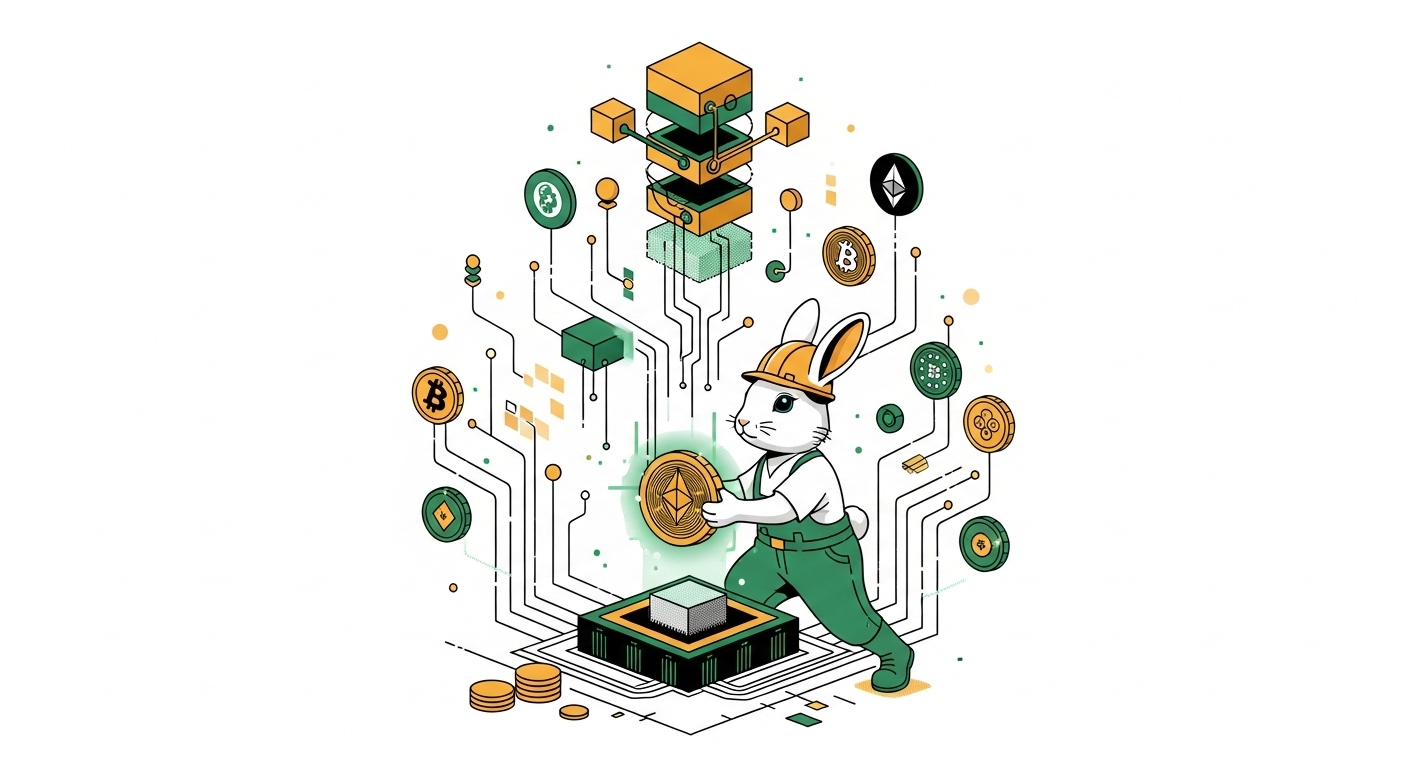Crypto Halving Impact shows how the reward miners receive for verifying transactions is cut in half. It happens roughly every four years and plays a key role in controlling Bitcoin’s supply.
For traders and investors, understanding halving matters because it affects scarcity, mining incentives, and often market prices.
This post looks at how halving works, its effects on the market and miners, real-world examples, and strategies you can use to stay ahead.
Whether you are new to crypto or managing your portfolio, knowing what to expect from halving events helps you make smarter moves.
What Is a Crypto Halving?

Understanding what a crypto halving means is essential to grasping how cryptocurrencies like Bitcoin control their supply and value.
“Halving is more than just a technical term; it’s a planned event that influences how coins enter the market and how miners earn rewards. For deeper insights, explore Crypto Alt Bull Run: A Clear Guide You Should Know. Let’s break down the basics.”
Definition and Purpose
A crypto halving is a scheduled event where the reward miners receive for validating transactions is reduced by 50%.
This means if a miner was earning 12.5 coins per block, after halving, they get only 6.25. The main goal here is to slow down the growth of the total coin supply.
By cutting rewards in half at regular intervals, the system makes sure new coins don’t flood the market too quickly.
This careful control keeps the cryptocurrency scarce, which often supports its value over time. Think of it like slowing the flow of water from a tap; by reducing the rate at which new coins are created, the lifespan of the cryptocurrency is stretched, avoiding quick depletion or uncontrolled inflation.
How It Works in Bitcoin and Other Coins
Bitcoin set the standard for halving events with a straightforward schedule. Every 210,000 blocks mined, Bitcoin cuts mining rewards in half.
This block height trigger works automatically and doesn’t rely on anyone’s decision, making the system predictable.
Other cryptocurrencies that use the proof-of-work mining method apply similar rules. For example, Litecoin also halves its block rewards following a predefined number of blocks.
“While each coin might differ in the exact block count between halvings or the initial reward, the principle stays the same: reduce rewards by half at set intervals to manage supply.
To explore profitable strategies around this, check out How to Make Money on Crypto (Complete Guide).”
Historical Frequency and Timing
Bitcoin’s halving happens roughly every four years, since 210,000 blocks take about that long to mine with the current block time of around 10 minutes.
This predictable rhythm helps miners and traders prepare for the changes in rewards and potential supply impacts.
Other proof-of-work coins have their own schedules but often follow a similar time frame, usually between 3 to 4 years per halving cycle.
The timing consistency helps maintain miner incentives while gradually limiting the total amount of coins created.
In summary, crypto halving is a built-in mechanism that enforces scarcity and sustainability within blockchain networks.
It’s a programmed pause that makes sure new coins come into the market at a controlled pace, directly shaping the economics of mining and trading.
Economic Effects of Halving

Halving events set the stage for major shifts in the cryptocurrency market, particularly for Bitcoin. By cutting mining rewards in half, the supply of new coins entering the market tightens sharply.
This creates ripple effects that impact prices, miners’ operations, and overall market mood. Let’s break down how these forces interact and what they mean for crypto traders and investors.
Supply Reduction and Price Expectations
The most obvious impact of halving is the reduction in new coin supply. When miners receive half the reward for each block, fewer new coins flow into the market each day.
If demand for the cryptocurrency remains steady or grows, basic supply and demand principles kick in: less supply with constant or rising demand usually pushes prices upward.
Imagine a popular limited-edition sneaker suddenly produced in half the quantity. If the number of buyers stays the same, the scarcity could cause the price to shoot up.
Crypto behaves similarly, this scheduled supply cut encourages many to expect a price increase over time. However, prices don’t always jump instantly.
They often adjust gradually, influenced by market anticipation, external news, and trading patterns.
Miner Profitability and Hash Rate Changes
Miners are directly hit by halving since their revenue for the same work falls by 50%. Many miners operate on thin margins, so a sudden cut in rewards forces them to make quick decisions.
• Less efficient rigs may shut down: Older or costly mining equipment might become unprofitable, leading operators to pause or stop mining.
• Hash rate typically drops temporarily: As some miners exit, the hash rate (total mining power) often dips following halving events.
• Mining difficulty adjusts: After the hash rate drops, the network lowers mining difficulty in response, helping remaining miners stay competitive.
This cycle acts like a filter that keeps mining sustainable for efficient and lower-cost operations. Over time, if prices rise, more miners return, and hash rate recovers.
Market Sentiment and Media Coverage
Halving events don’t just affect supply and mining mechanics; they also generate significant hype and media attention. This buzz builds anticipation among traders, investors, and crypto enthusiasts long before the halving date.
• Price spikes often appear before and after halving: Expect increased volatility as speculation drives buying activity.
• Media coverage fuels excitement: Headlines highlighting scarcity and potential price rallies attract new investors.
• Psychological impact: Many market participants buy ahead, hoping to profit from expected price gains, which can become a self-reinforcing cycle.
Together, these factors shape market sentiment and momentarily boost demand, adding to the complexity of halving’s economic effects.
Understanding these interconnected effects can help you navigate crypto markets with more confidence. Each halving reshapes the supply-demand balance while testing miner resilience and stirring market emotions.
This mix creates opportunities, but staying informed remains key.
Real-World Case Studies

To grasp how halvings shape the crypto market and mining landscape, it helps to look at actual examples. The effects of halving stretch across different coins, each with unique reactions based on their market size, miner base, and network strength.
Here’s a clear view of how past and upcoming halvings have played out or are expected to influence price, mining, and overall health.
Bitcoin Halvings
Bitcoin’s halving events represent the clearest illustrations of the halving impact. Each event cut block rewards in half and was followed by notable changes in price, miner behavior, and network performance.
• 2012 Halving: Reward dropped from 50 to 25 BTC. The price was around $12 before halving and soared to over $1,000 in the following year. Many miners experienced growing profitability as prices rose, which helped sustain the hash rate despite lower rewards. The network remained stable and secure.
• 2016 Halving: Reward cut to 12.5 BTC. The price hovered around $650 ahead of the halving but rallied to nearly $20,000 by late 2017. Miner response was mixed at first; less efficient miners exited, causing a short dip in hash rate. Difficulty adjusted downward, and the network quickly regained strength.
• 2020 Halving: Block reward fell to 6.25 BTC. Price hovered near $8,500, then surged to a peak above $60,000 over the next year. The hash rate initially dropped but quickly recovered as higher prices justified mining investments and new hardware upgrades. Network health remained robust.
• 2024 Halving (Expected): Planned reward reduction to 3.125 BTC. Market participants expect increased scarcity to boost value gradually. Miner profitability will face stress at first, especially if prices stay flat. Network health depends on how miners adapt to the lower reward environment.
“Bitcoin’s history shows halving events create periods of adjustment for miners but reward holders with lower supply growth that usually precedes strong price rallies and sustained network health. For lighter insights, explore Crypto Fun Facts: Surprising Stories and Odd Records.”
Litecoin Halvings
Litecoin, often called the silver to Bitcoin’s gold, operates on a similar halving cycle but with a smaller market and lower price levels. Its halvings offer insight into supply shocks on a less dominant chain.
• 2015 Halving: Reward reduced from 50 to 25 LTC. Price moved from about $4 to around $8 afterward. Miner adjustments were noticeable since Litecoin miners faced slimmer margins sooner, causing a temporary dip in hash rate and a difficulty recalibration.
• 2019 Halving: Reward dropped from 25 to 12.5 LTC. Price was approximately $75 pre-halving, then saw a modest rise to $140 within 6 months. Miner activity adjusted as older rigs shut down, but the network maintained steady health thanks to ongoing demand and loyal miner presence.
Litecoin’s smaller scale makes its halvings more volatile in miner participation but still clearly influences price trends by tightening supply. It shows how halvings impact coins with less liquidity and miner diversity compared to Bitcoin.
Upcoming Halvings on Emerging Coins
Several newer proof-of-work coins have halvings scheduled over the next 12 to 24 months. Though smaller and less followed than Bitcoin or Litecoin, these halvings carry potential to affect price and miner activity in their networks.
Notable examples include:
• Bitcoin Cash (BCH): Block reward reduction planned around April 2024, from 6.25 to 3.125 BCH. Given BCH’s moderate market size, an impact on miner revenue and network security is expected. Price movements may follow with some volatility.
• Zcash (ZEC): Expected halving mid-2024, dropping rewards from 3.125 to 1.5625 ZEC. Zcash’s privacy features give it niche demand, so miner profitability will be tested, especially with fluctuating price trends.
• Ravencoin (RVN): Scheduled halving in early 2024, cutting rewards from 5,000 to 2,500 RVN per block. As a smaller network, miner adjustments could be swift, and price impact might be more volatile compared to bigger coins.
These emerging coins demonstrate halving effects extend beyond Bitcoin, involving shifts in miner strategies and price flow that depend heavily on community support and broader market dynamics.
Watching upcoming halvings helps anticipate how supply shocks ripple through different crypto ecosystems.
Understanding these real-world cases provides solid clues about what happens when mining rewards get cut. Different coins face unique challenges, but supply-tightening combined with miner adjustments almost always leads to notable price and network activity shifts.
This section sets the stage to think about how to position yourself for future halving events.
Strategies for Traders and Investors
Halving events shake up the crypto market in ways that both traders and investors need to prepare for. The reduced mining rewards can cause price swings and affect the overall market sentiment.
Approaching these periods with thoughtful strategies helps you avoid surprises and stay positioned to benefit from the shifts.
Here are key tactics to consider as halving dates approach and unfold. Explore Trading the Crypto Halving Cycle: Order Flow Insights, to learn more about Crypto Halving.
Preparing for Volatility
Halvings often trigger sharp price movements, sometimes creating sudden gains or unexpected drops. To manage these swings safely:
• Set stop-loss orders to limit potential losses if the market moves against your position.
• Use smaller position sizes to reduce exposure during periods of uncertain price action.
• Keep an eye on news feeds and market chatter around halving dates. Headlines and social media can spark quick reactions in the market.
These steps act like safety nets to protect your capital. Volatility tends to rise before and shortly after a halving, so cautious adjustments can prevent emotional decision-making.
Adjusting Mining Operations
Mining profit margins tighten when rewards halve, pushing miners to re-evaluate their setups. Staying profitable means adapting to the new environment:
• Upgrade to more efficient hardware that uses less energy or offers higher hash rates, if costs allow.
• Join mining pools to share resources and maintain steady income, especially if solo mining becomes less viable.
• Consider pausing mining temporarily if electricity costs outpace rewards, waiting for prices or network difficulty to shift in your favor.
Miners who adapt faster often survive halving-related disruptions, while those relying on outdated setups risk shutting down.
Long-Term Holding vs Short-Term Trading
For investors, the halving sparks two very different approaches:
• Holding for the long term aims to benefit from the overall tightening of supply and expected price appreciation over months or years. This reduces stress over short-term dips and avoids chasing fleeting trends.
• Short-term trading tries to capitalize on the increased volatility by buying and selling on price spikes around halving events. This method carries higher risk and requires quick reactions and discipline.
Balancing these approaches depends on your risk tolerance, market knowledge, and time commitment. Remember, chasing quick gains often leads to costly mistakes, while steady holding can grow wealth through supply constraints.
To dive deeper into trading strategies, explore how CFD brokers work for crypto trading and the differences between long and short positions, helping you tailor your approach in volatile markets.
Conclusion
Crypto halving events consistently shrink the new coin supply, which often pushes prices higher if demand stays stable.
These halvings also reshape miner economics, leading to changes in hash rates and mining difficulty that keep networks balanced over time.
Real examples from Bitcoin and Litecoin show how markets and miners adjust, creating waves of volatility alongside long-term growth opportunities.
Successful traders and investors prepare for these changes by managing risk, adapting mining strategies, or choosing between holding and active trading.
Staying informed about halvings can help you make smarter decisions and better handle market shifts.
Keep following CoinBuns for more practical guides and updates to sharpen your crypto knowledge and trading skills. Your next halving strategy starts here.

Adeyemi Adetilewa is interested in blockchain, cryptocurrency, and web3. When he is not looking for the next alpha, he is busy working as a husband and father.

